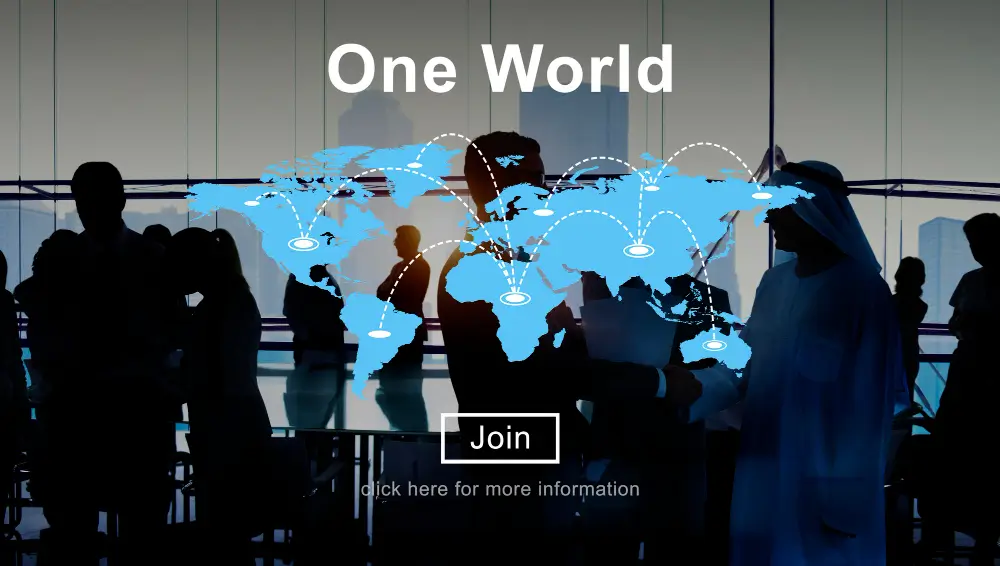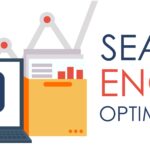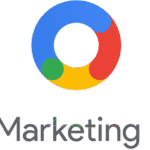In a world dominated by digital ads, social algorithms, and AI-driven targeting, you might think traditional advertising giants are fading. Think again.
The largest advertising company in the world isn’t just surviving — it’s thriving by evolving. These global agencies don’t just sell ads; they shape culture, influence politics, launch billion-dollar brands, and steer consumer behavior across continents.
Whether you’re a marketing pro, business owner, or curious observer of the industry, understanding who leads the pack — and how they do it — offers powerful insight into the future of advertising.
Who Is the Largest Advertising Company in the World in 2025?

As of 2025, the largest advertising company in the world is WPP plc—a UK-based global powerhouse that consistently leads the industry in both revenue and influence. With a presence in over 100 countries, WPP oversees a vast portfolio of agencies specializing in everything from traditional advertising and PR to data-driven digital marketing, media buying, and brand experience.
Key Facts About WPP in 2025:
- Global revenue: Estimated at over $18 billion.
- Employees: More than 100,000 staff worldwide.
- Headquarters: London, United Kingdom.
- Major subsidiaries: Ogilvy, GroupM, VML (merged with Y&R), Wunderman Thompson, and Grey.
- Services: Creative advertising, media investment, performance marketing, data analytics, public relations, and digital transformation.
Why WPP Remains on Top
What keeps WPP at the top isn’t just scale—it’s agility. Over the past decade, the company has strategically merged, restructured, and invested in AI, data science, and integrated digital platforms. It has adapted to the decline of traditional media, the rise of influencer and content marketing, privacy-first advertising, multi-channel campaign automation, and globalized branding with local cultural sensitivity.
While challengers like Omnicom Group, Publicis Groupe, Interpublic Group (IPG), and Dentsu remain major players, WPP leads in terms of overall size, global reach, and service diversity.
How These Agencies Shape Global Advertising Trends?
The largest advertising companies in the world aren’t just following consumer behavior — they’re actively shaping it. With billions in ad spend, exclusive access to data, and partnerships with the biggest global brands, these agencies influence how we see, feel, and respond to products, causes, and even culture itself.
Here’s how they lead global advertising trends:
1. Setting Creative Standards
Top agencies define what “great” looks like across industries. Campaigns from WPP’s Ogilvy or Publicis’ Leo Burnett don’t just win awards — they set benchmarks for tone, storytelling, and visual identity across digital, TV, and social platforms.
2. Innovating with Technology
These agencies invest early in tools that later become mainstream—like AI-generated ad copy, dynamic content personalization, programmatic ad buying, and voice search optimization. They work directly with platforms like Google, Meta, and Amazon to test new features before public rollout.
3. Driving Multi-Channel Integration
Global firms lead the shift from siloed campaigns to fully integrated brand ecosystems. They combine social, search, video, native, and offline media into seamless experiences powered by unified data and attribution models.
4. Influencing Platform Behavior
Top-tier agencies negotiate directly with ad platforms. Their media buying power gives them leverage to influence pricing models, policy shifts, and beta testing. In many cases, agencies have more insight into platform changes than most brands.
5. Promoting Ethical & Inclusive Branding
With massive cultural reach, these agencies are also leading the charge in DEI (diversity, equity, inclusion) and sustainability messaging. What they choose to support—or reject—can push global brands toward more ethical storytelling and operations.
6. Localizing Global Campaigns
They don’t just launch global campaigns—they localize them. WPP and others maintain regional teams across Asia, the Middle East, Africa, and Latin America to ensure that creative resonates on a cultural level, not just a linguistic one.
When the largest advertising company in the world moves, the industry follows. From campaign formats to messaging tone, tech adoption to media trends—these agencies shape the very future of marketing.
Read:
What Makes a Great Global Advertising Agency Today?
It’s no longer enough to just produce clever ads or buy media at scale. In 2025, the largest advertising companies in the world are defined by their ability to adapt, integrate, and lead—across platforms, cultures, and technologies.
Here’s what sets the best apart:
1. Integrated Capabilities
Top agencies aren’t just media buyers or creative shops. They offer full-service, end-to-end marketing solutions—from strategy, branding, and content to analytics, e-commerce, and customer experience. Clients expect seamless delivery across every touchpoint.
2. Data-Driven Creativity
Great agencies know that data and creativity aren’t enemies—they’re partners. They use behavioral insights, AI, and machine learning to inform messaging, predict outcomes, and personalize experiences at scale—without losing the emotional spark.
3. Global Reach with Local Expertise
A truly global agency doesn’t just translate a campaign—it localizes it. That means building regional teams that deeply understand cultural nuances, regulatory requirements, and consumer preferences in each market.
4. Tech Infrastructure & Innovation
The best firms invest in proprietary platforms, analytics tools, and AI-driven automation. They integrate seamlessly with client tech stacks, operate in real time, and test emerging tools before they hit the mainstream.
5. Brand Purpose & Ethics
Modern agencies must help brands take meaningful positions on social and environmental issues. Purpose-driven marketing, inclusive representation, and authentic storytelling are no longer optional—they’re expected.
6. Speed & Agility
In a world where trends change overnight, leading agencies operate with startup-level speed. They break the traditional “campaign cycle” model and replace it with agile content production, iterative testing, and real-time optimization.
The Modern Standard
The greatest global advertising agencies today aren’t just vendors—they’re strategic partners. They help brands tell smarter stories, act faster, reach deeper, and stay relevant in a world that changes by the minute.
Top 5 Global Advertising Companies
| Rank | Company | Headquarters | Estimated Revenue (2025) | Notable Agencies/Subsidiaries | Key Strengths |
|---|---|---|---|---|---|
| 1 | WPP plc | London, UK | $18B+ | Ogilvy, GroupM, VML, Wunderman Thompson | Scale, data-driven innovation, global reach |
| 2 | Omnicom Group | New York, USA | $15B+ | BBDO, DDB, TBWA, OMD, PHD | Creative excellence, media buying, brand equity |
| 3 | Publicis Groupe | Paris, France | $14B+ | Leo Burnett, Saatchi & Saatchi, Epsilon | Tech integration, personalization, data assets |
| 4 | Interpublic Group (IPG) | New York, USA | $10B+ | McCann, FCB, MullenLowe, Initiative | Agile structure, performance marketing |
| 5 | Dentsu Inc. | Tokyo, Japan | $9B+ | Dentsu Creative, iProspect, Merkle | APAC dominance, digital-first, CX innovation |
Quick Insights:
- WPP leads in scale, but Publicis stands out for its tech investments (especially in AI and data).
- Omnicom is known for timeless creativity across decades of iconic campaigns.
- IPG delivers strong results in highly competitive U.S. and LATAM markets.
- Dentsu remains dominant in Asia and continues to expand globally via mergers and acquisitions.
Also read:
Why Taif Works with Global-Standard Thinking?

While giants like WPP and Omnicom dominate on scale, Taif stands out by applying global standards with local precision. We bring the mindset, discipline, and innovation of the world’s biggest advertising companies — without the bureaucracy, delays, or one-size-fits-all approach.
Here’s how Taif delivers global-level impact:
1. Strategy-First, Always
Just like top-tier global agencies, we lead with research, insight, and long-term brand vision. Every campaign is built on data-backed strategy — not guesswork or trends.
2. Integrated Marketing Execution
From media buying to social content, from SEO to creative storytelling — Taif connects every part of your brand journey across platforms, channels, and formats.
3. Scalable Infrastructure
Our systems are designed for growth. Whether you’re launching locally or expanding regionally, we build campaigns that scale without losing clarity, consistency, or control.
4. Global Insight, Local Relevance
We understand that messaging must change by market. That’s why we blend global best practices with local consumer behavior — ensuring cultural fit, not just language translation.
5. Performance Meets Purpose
Like the best global agencies, we focus on results. But we also help brands communicate their values — from sustainability to inclusion — in ways that connect and convert.
6. Fast, Focused, Flexible
Where the big players move slow, Taif moves fast. We respond in real time, test faster, and make data-driven pivots to protect your ROI and keep your brand relevant.
Global Standards, Local Impact
Taif may not be the largest advertising company in the world — but we operate like one where it matters most: in strategy, execution, and client growth. When you work with Taif, you get a global-standard agency mindset, with the speed and care of a true growth partner.
FAQ
Who is the largest advertising company in the world in 2025?
As of 2025, WPP plc is the largest advertising company in the world, with estimated revenues over $18 billion, global operations in 100+ countries, and major agencies like Ogilvy, GroupM, and VML under its umbrella.
What makes a global advertising agency successful today?
The top agencies combine integrated services, data-driven creativity, local market understanding, ethical branding, and agile execution. Success today is about balancing scale, personalization, and cultural relevance.
How do these large agencies shape advertising trends?
They influence creative standards, test emerging technologies, drive multi-channel campaign models, and often co-develop tools with platforms like Google and Meta. Their scale gives them early access and strategic influence.
Are smaller agencies like Taif as effective as global giants?
Yes—Taif delivers global-standard thinking with more flexibility and speed. While we don’t match WPP in size, we bring strategy, creativity, and performance together in a lean, agile framework that’s ideal for fast-growing brands.
Should I work with a large agency or a specialized firm like Taif?
It depends on your goals. Large enterprises may prefer global networks, but if you value personal attention, faster execution, and scalable performance marketing—a focused agency like Taif can often outperform larger firms in both speed and ROI.
Conclusion
The largest advertising company in the world, WPP, continues to lead the industry by adapting to change, integrating technology, and setting creative benchmarks. Its size is impressive — but what truly matters today is the ability to think globally, act locally, and execute with speed and precision.
That’s where agencies like Taif stand out.
We take inspiration from the world’s leading advertising firms — not just in strategy, but in standards. We bring global thinking to every campaign, combining creativity, data, and cultural nuance to help brands grow smarter, faster, and stronger.
So whether you’re a startup with big goals or a brand seeking to scale, remember:
You don’t need to be the biggest.
You just need the right team behind you.
Work with Taif. Build like a global leader. Move like a challenger.



